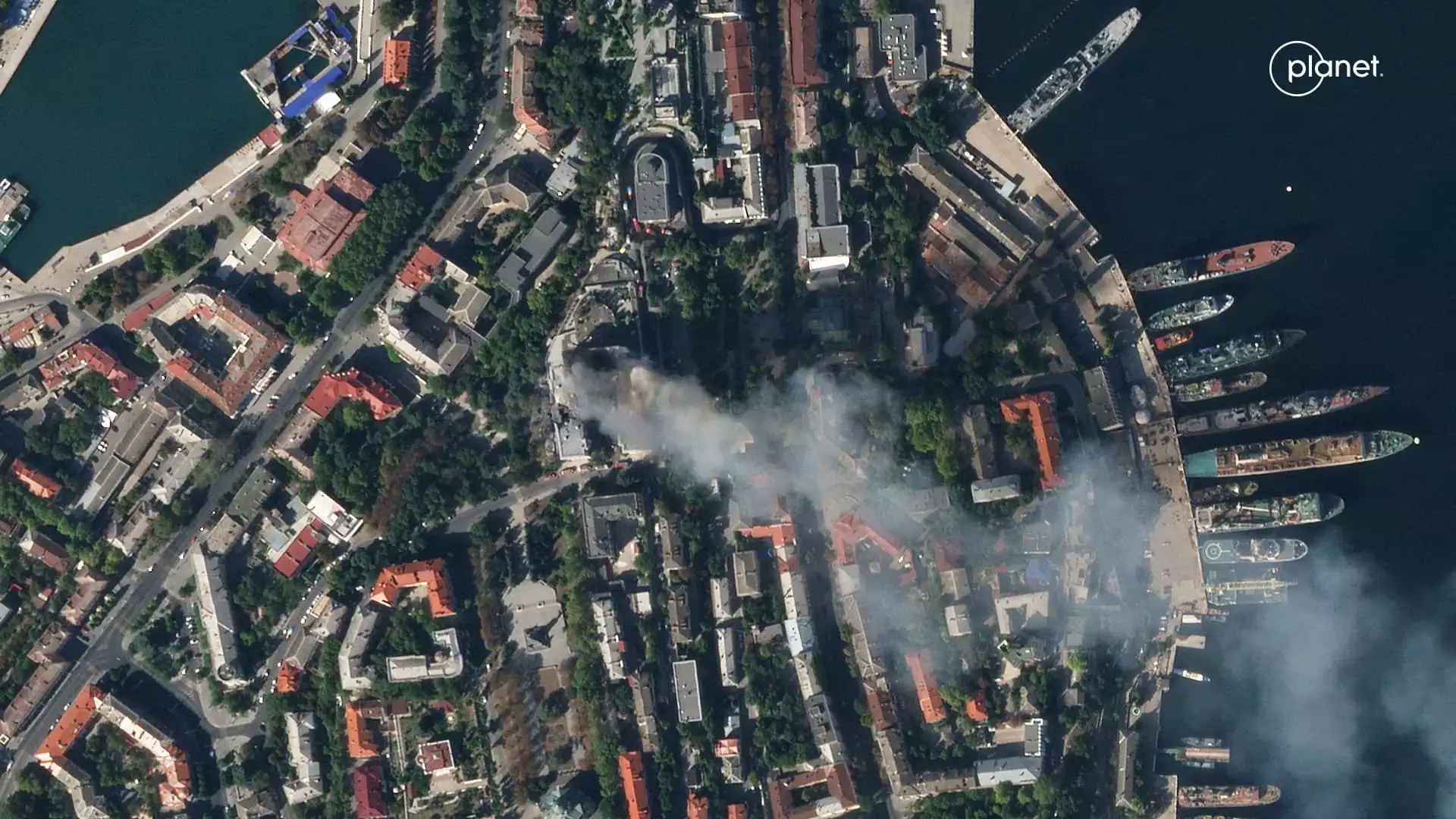The ongoing conflict between Russia and Ukraine has once again reached a critical point, with both sides exchanging attacks and engaging in escalated military maneuvers. The recent events, which include the shooting down of Ukrainian drones by Russian air defense systems and the fire at an oil refinery in the Krasnodar region, have heightened tensions in the region. This article critically examines the situation, delving into the details of these incidents and their potential implications for the already strained relationship between the two nations.
Engagements in the Black Sea and Crimea
Russia’s Defense Ministry reported that it had successfully destroyed over 30 Ukrainian drones over the Black Sea and the northwestern part of the Crimean peninsula. While this may be seen as a military victory for Russia, it raises concerns about the escalation of hostilities in the region. The increasing number of drone attacks and shelling on the Russian border regions and Moscow-annexed Crimea adds fuel to an already burning fire. It is important to note that Ukrainian officials have consistently denied responsibility for these attacks, further complicating the situation.
In response to the Russian drone strikes, Ukraine’s air force claimed to have shot down five Iranian-made Shahed exploding drones launched by Russia overnight. This tit-for-tat approach only serves to intensify the conflict, with both sides resorting to aggression rather than diplomatic negotiations. The use of explosive drones highlights the dangerous and destructive nature of the conflict, which has severe consequences for civilians caught in the crossfire.
As the conflict rages on, four police officers were wounded when a shell, fired by Russian troops, exploded near their police car in the city of Siversk. This incident took place close to the front line in the country’s east, where Ukrainian and Russian forces are engaged in a relentless battle for control. The casualties suffered by both sides are alarming and reflect the heavy but inconclusive fighting in the region.
Russia’s Casualty Rates and Europe’s Role
According to British intelligence, Russia has experienced some of its highest casualty rates this year due to the ongoing fighting in and around the town of Avdiivka. The Russian Ministry of Defence’s intelligence update highlighted the commitment of multiple brigades in the area since mid-October, emphasizing the scale and intensity of the conflict. This information underscores the severity of the situation and raises questions about the potential for further escalation.
Meanwhile, a prominent ally of Russian President Vladimir Putin warned that Russia might take action against European Union (EU) member states if the EU proceeds with its plan to use frozen Russian funds to support Ukraine’s post-war reconstruction efforts. These threats from Vyacheslav Volodin, Chairman of the State Duma, are concerning and indicate Russia’s willingness to impose significant costs on the EU. This development further strains the already fragile relationship between Russia and the EU, intensifying geopolitical tensions in the region.
The recent events involving Russia and Ukraine demonstrate the precarious nature of their relationship. The shooting down of drones, the escalation of fighting in the east, and the rising threat of economic retaliation amplify the existing tensions between the two countries. It is imperative that diplomatic channels are explored to deescalate the conflict and prevent further loss of life and destruction. Failure to do so will only perpetuate a cycle of violence and hinder any prospects for peace in the region. As the international community watches these events unfold, it is crucial to prioritize dialogue and negotiation as the means to resolve this critical situation.


Leave a Reply